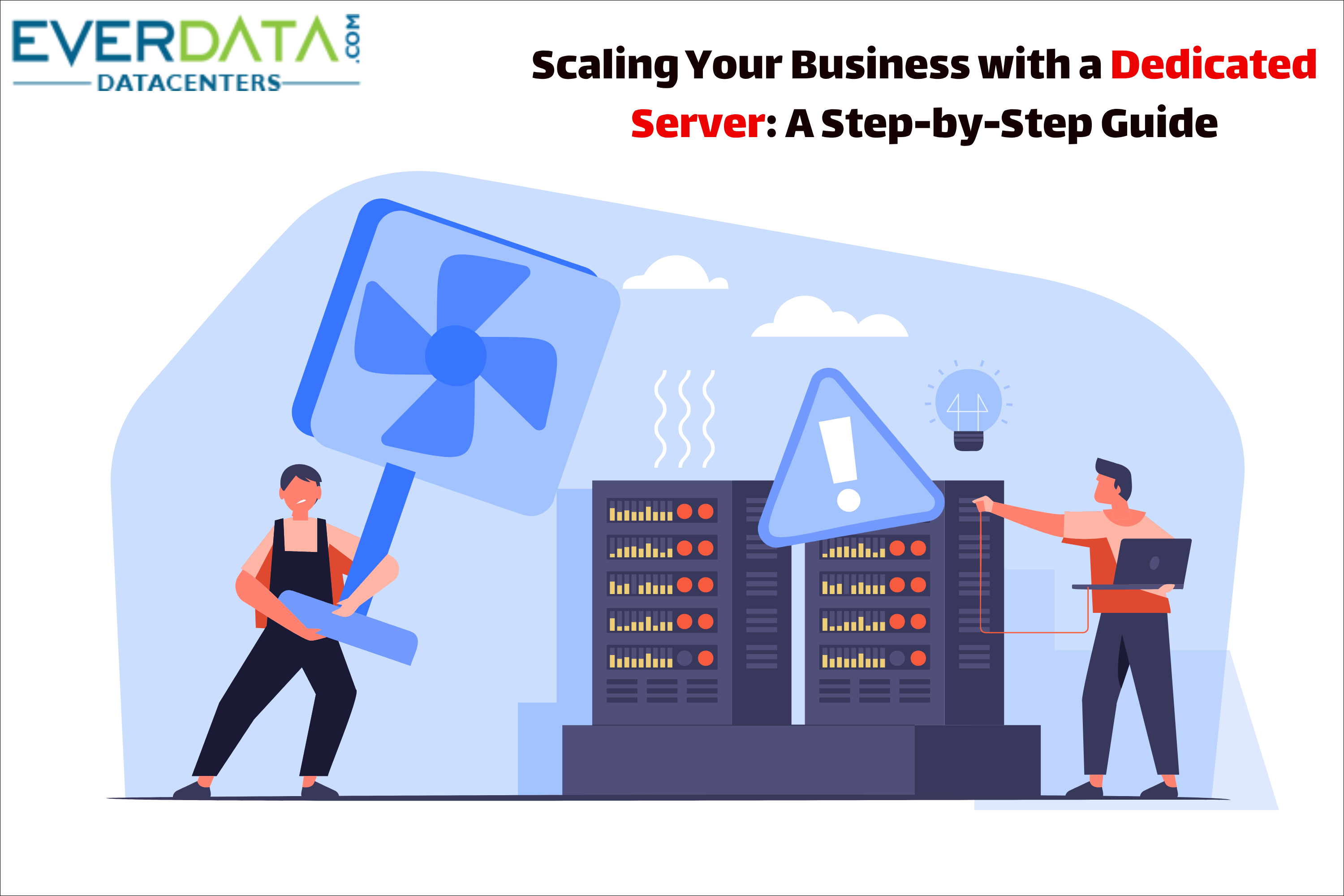
Submitted by admin on

In today's competitive digital landscape, businesses are constantly looking for ways to scale their operations and accommodate increasing demands. One effective solution that can support growth and optimize performance is a dedicated server. A dedicated server offers exclusive resources and enhanced control, making it an ideal choice for businesses experiencing rapid expansion. In this step-by-step guide, we will explore how you can scale your business with a Dedicated Server, outlining the key considerations and actions to take along the way.
1. Assessing Your Business Needs:
Before diving into the world of dedicated servers, it is crucial to assess your business needs. Determine the specific requirements for your website or application in terms of traffic, storage, and processing power. Consider factors like anticipated growth, peak usage times, and any specialized software or applications you may require. This assessment will help you choose the right dedicated server specifications to accommodate your current and future needs.
2. Selecting the Right Dedicated Server Provider:
Choosing the right dedicated server provider is paramount to the success of your scalability efforts. Research different providers, comparing their offerings, reliability, customer support, and pricing structures. Look for providers that offer customizable server configurations and scalable solutions that can grow with your business. Consider their track record, reputation, and reviews from existing customers to ensure you make an informed decision.
3. Determining Server Specifications:
Once you have chosen a dedicated server provider, it's time to determine the ideal server specifications for your business. Factors to consider include CPU power, RAM, storage capacity, bandwidth, and operating system options. Consult with your dedicated server provider to understand the available options and discuss your requirements. A reputable provider will assist you in selecting the most suitable specifications that align with your business objectives.
4. Configuring and Setting Up the Dedicated Server:
Once you have chosen the server specifications, it's time to configure and set up your dedicated server. This process involves installing the operating system, configuring network settings, and optimizing security measures. Some providers offer managed services, where their experts handle the initial setup, while others provide you with full control to configure the server yourself. Whichever option you choose, ensure that your server is optimized for performance, security, and reliability.
5. Migrating Your Data and Applications:
If you are transitioning from a shared hosting environment to a dedicated server, you will need to migrate your data and applications. Develop a migration plan that outlines the steps involved, ensuring minimal downtime and a smooth transition. Back up your data, transfer it to the new server, and reconfigure your applications to work seamlessly with the dedicated server. It's essential to test the migrated data and applications thoroughly to verify their functionality before going live.
6. Monitoring and Optimization:
Once your dedicated server is up and running, it's crucial to monitor its performance and make any necessary optimizations. Utilize server monitoring tools to keep track of resource usage, website performance, and potential bottlenecks. Regularly update your software, implement security patches, and fine-tune server settings to ensure optimal performance and security. Monitoring and optimizing your dedicated server will help you identify any issues and proactively address them, keeping your business operations running smoothly.
Conclusion:
Scaling your business with a dedicated server can provide the resources, control, and flexibility needed to accommodate growth and optimize performance. By following this step-by-step guide, you can assess your business needs, select the right provider, determine server specifications, configure and set up the server, migrate your data and applications, and monitor and optimize your dedicated server. With careful planning and implementation, you can leverage the power of a dedicated server to scale your business successfully and stay ahead in today


Add new comment